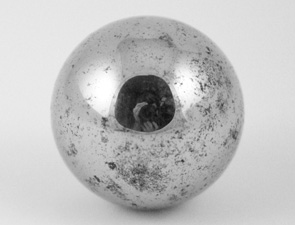Phil’s Findings #12: Metallic Aesthetic
16 August 2011


Phil Howes, the Institute of Making’s post-doc researcher, shares his thoughts and findings as he delves into the sensoaesthetic world of materials. Check this space every Monday for Phil's latest posting.
We are surrounded by metal. It forms the structures of our buildings, it’s used to make the vehicles that transport us around our world, and it’s at the root of all our hi-tech gadgets. Although metal is commonly used for its strength or high conductivity in mechanical and structural applications, it has a definite aesthetic appeal which stretches far beyond its purely functional side. For example, architects make use of the aesthetic appeal of metals in modern buildings where the sweeping curves and shining surfaces of metal frameworks and facades can provide equal amounts of structural integrity and beauty. But the aesthetic side of metal isn’t just about how it looks: it’s about how it feels too. We come into contact with metal everyday, and have an intrinsic appreciation of its characteristics. So what is it about metal that sets it apart from all the other materials around us?
When we touch materials, the primary sensations we experience relate the warmth, softness and roughness. Metals feel cool to the touch, they are hard, and usually smooth. These sensations arise because of the specific material characteristics of metal. The hardness arises from the strength of the bonds between particles in the metal, and the smoothness because of the manufacturing processes. The coolness of metals arises due to the intriguing specifics of the metallic structure.
Our skin temperature is usually around 30 to 35°C, which tends to be warmer than the things around us in our local environment. When we touch a material that is at a lower temperature than our skin, heat is drawn from the skin and into the material. In the case of woods and plastics, they tend to feel warm because there is very slow heat transfer. However, metals are extremely good conductors of heat, so when your skin makes contact with metal heat is drawn out of the skin very easily. We detect this as a cool sensation, even though the temperature of the metal is no different to that of the woods and plastics around us. Metals have a crystalline structure of ordered atoms which sit in a sea of electrons. When the metal is heated, the atoms and electrons gain energy. In the case of the atoms, they stay where they are but start vibrating with excitement. These vibrations pass from one atom to the next through the crystal, spreading the energy around very quickly. Many of the electrons in metals are free to move, so when they become excited they zip around the structure, sharing their excitement with everything they bang into and spreading their energy very quickly. It is the combination of these two events which allows metal to conduct heat very quickly. So when you touch the metal, these excitable particles quickly steal energy from your skin and distribute it throughout the metal, and you detect this as a sensation of coolness.
The opposite is true when the metal is above your skin temperature. On a hot summer day, you’ll have no problem walking across wooden decking in bare feet, but you would think twice about walking across a metal surface. In this case, the excitable particles in the metal would transfer their energy into your feet very quickly, resulting in a rather unpleasant burn.